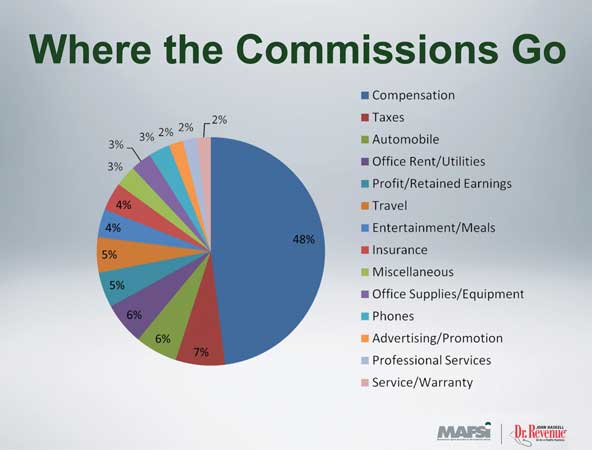This article is based on a presentation by John Haskell at the MAFSI Business Development Conference earlier this year.
The Manufacturers Agents Association for the Food Service Industry (MAFSI), provided proprietary data and a unique platform of reps and principals to discuss how the rep business really works.
Proprietary Data — But Universal Application
Clearly the specific data presented here only applies to foodservice reps, but the message contained here is universally applicable to all reps. The bottom line is that the rep business is a relatively small business with limited profit potential. Repping is a good way to make a living, but it is generally not a business that creates enormous wealth. At the same time, a rep firm can provide a profitable living for everyone involved.
Clear Understanding of the Numbers
The rep firm is the branch office in the territory for the manufacturer (principal). In this capacity both reps and principals need to have a very clear understanding of the costs of operating a rep firm. The better your principals know and understand your rep business, the better.

Revenue and Costs
Most MAFSI firms have fewer than eight salespeople on staff and more than 70 percent have fewer than five.
Most firms earn between 5 percent and 7 percent commission. Most of the MAFSI rep firms have sales of under $27 million. Therefore, most of the 300-member firms have commission income of under $ 2,000,000.
Salespeople Cost
The business is all about the sales force. In the case of the MAFSI rep firms, it costs $81,000–$140,000 per salesperson annually with all of their expenses.
Organizing Your Profit & Loss Statement
Most accountants would say sales salaries are above “cost of goods sold,” but other expenses are below “the line.” I strongly suggest that a rep firm create a modified form of P&L to account very clearly for all costs related to fielding the sales force.
After all, the sales force is the product that a rep firm is selling. It is the sales force that you are organized to sell to your principals. It is clear that both of you should know and understand the cost of fielding this “product.”
Accounting for Ownership
If the owner is a salesperson, he/she should be charged against the sales force just like any other salesperson. Except, it is probably not realistic to charge 100 percent of the owner’s costs to the sales force. Therefore, an allocation of the owner’s cost to sales force makes sense. Some amount goes to sales force and the rest to administration.
Bottom-Line
The fact is that a rep firm makes around 5 percent at best. Therefore, rep firm management must learn to build volume and profit. Knowing the facts is critical to future success.
Line Card Management
A rep firm looking to grow and prosper must start with its package of lines. We found that 20 percent of MAFSI firms have 10 lines or fewer, but 40 percent have more than 17 lines. It has been shown clearly that too many lines reduces the efficiency and effectiveness of the rep firm’s sales programs.
Cleaning Up the Line Card
Time and again reps have told me that cleaning up the line card and getting rid of small lines that produce less than 5 percent of commission income is a major step to greater profit.
Producing Results for the Winners
With a streamlined package of lines, reps can do a better job for the principals that provide the reps with the best opportunity to grow the business. This will significantly increase commission income.
Selling the System
Going to market with reps is a solid, professional, and progressive method. When more reps recognize that too many lines and doing a mediocre job for many lines is counterproductive, reps will be able as a group to do a better job of selling more and more principals on using reps to market. Knowing “Where do the Commissions Go?” and how to manage your package of lines, you get the answer to making the rep business work for reps in all areas of the MANA world.

